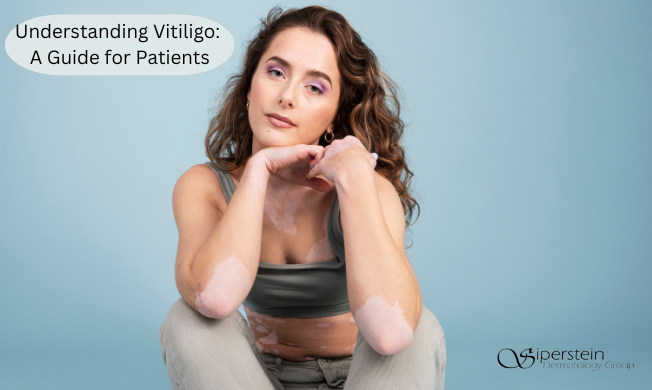What is Vitiligo?
Vitiligo is a chronic autoimmune disorder that results in painless, pale white patches on the skin, hair, eyes, and inside the mouth. While it is not life-threatening or contagious, vitiligo can cause significant psychological distress due to its cosmetic impact.
Types of Vitiligo
There are two main types of vitiligo:
1. Segmental Vitiligo (Unilateral or Localized): This type affects one part of the body and is less common.
2. Non-segmental Vitiligo (Bilateral or Generalized): Appearing on both sides of the body in a symmetric pattern, this is the more common type.
Why and How Vitiligo Occurs
Melanin, the pigment responsible for skin and hair color, is produced by melanocytes. Vitiligo occurs when these melanocytes die or stop functioning. While it affects people of all skin types, it is more noticeable in individuals with darker skin.
Causes of Vitiligo
Vitiligo can be triggered by several factors, including:
- Autoimmune Response: The body’s immune system mistakenly attacks and destroys melanocytes.
- Hereditary Factors: Family history may increase the likelihood of developing vitiligo.
- Trigger Events: Physical trauma or emotional stress can trigger the onset of vitiligo.
Who is Affected by Vitiligo?
Vitiligo affects men and women equally across all ethnicities. It can develop at any age but typically appears before the age of 30.
Common Areas Affected
Vitiligo commonly appears in areas such as:
- Around the mouth and eyes
- Fingers and wrists
- Armpits
- Groin and genitals
- Inside the mouth
Diagnosing Vitiligo
Diagnosis is typically made through a clinical examination. A Wood’s lamp, which causes affected areas to fluoresce a bright blue/white color, may be used to differentiate vitiligo from other conditions that cause skin pigment changes.
Treatment Options for Vitiligo
Treatment for vitiligo is highly individualized and often involves trial and error. Patience is crucial, as treatments can take time to show results. Some treatment options include:
- Topical Medications: Steroids, calcineurin inhibitors, vitamin D derivatives, and Opzelura (a newer drug on the market that acts as a JAK1 & JAK2 inhibitor).
- Light Therapy: UVB light therapy can help restore skin color.
- Depigmenting Creams: Used to even out skin tone by lightening the areas surrounding the patches.
Prognosis and Management
While there is no cure for vitiligo, it can be managed with the aim of restoring skin color, preventing the enlargement of hypopigmented areas, and stopping the development of new spots. It’s important to remain patient and work with a provider who understands and supports your treatment goals.
Final Thoughts
Living with vitiligo can be challenging, but with the right approach and support, effective management is possible. Remember, your journey with vitiligo is unique, and finding a dedicated provider to help navigate your treatment options is essential. Stay hopeful and proactive in your care.


